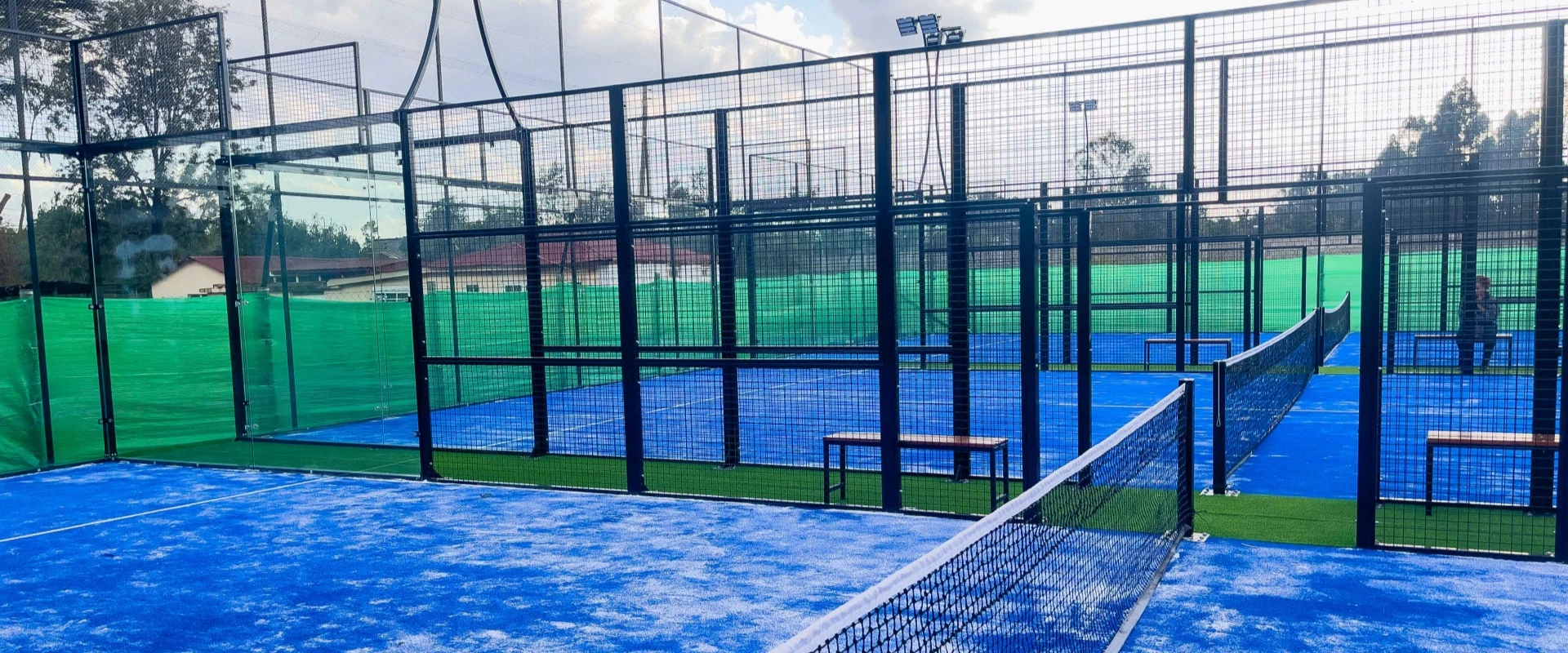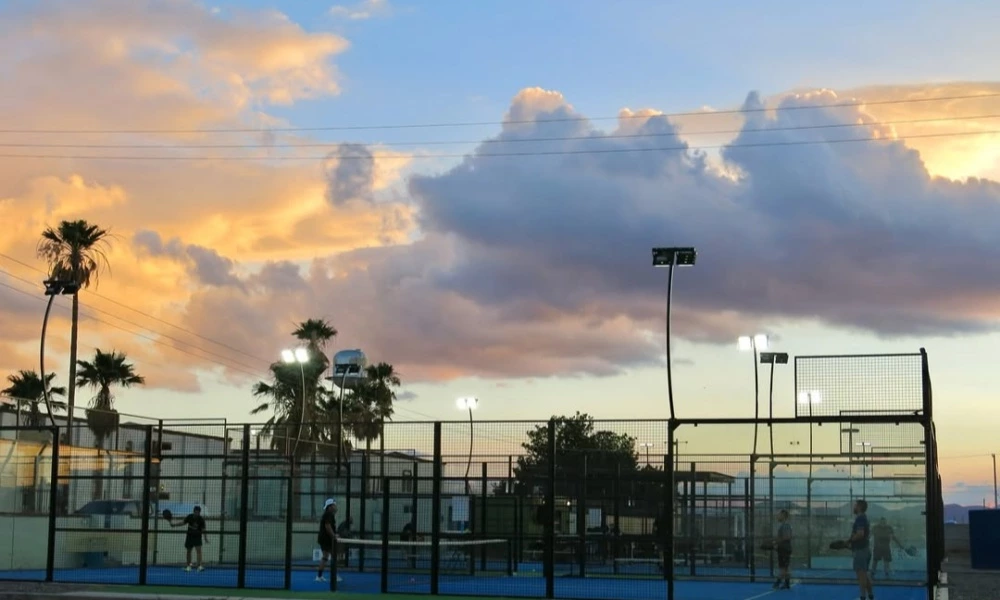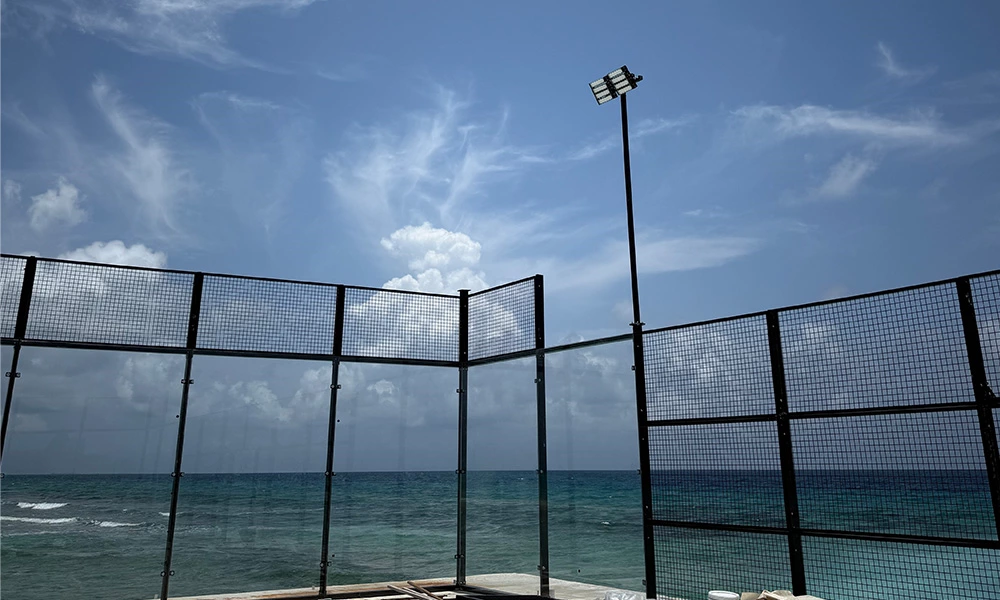Padel VS Tenis: Diferencias en los deportes de tenis
¿Qué es el tenis?
El tenis es un deporte de pelota que se juega en una cancha rectangular, generalmente entre dos o cuatro jugadores. Durante el juego, los jugadores usan raquetas para golpear la pelota de tenis de manera que pase por encima de la red en el medio y caiga en la cancha del oponente. El tenis es conocido por su alta intensidad y habilidad y es amado por personas de todo el mundo.
El lugar de nacimiento del tenis se remonta a Francia en el siglo XII, cuando el juego se llamaba "jeu de paume", que significa "juego de palma". Inicialmente, los jugadores golpeaban la pelota con la palma de sus manos, y luego evolucionaron gradualmente hacia el uso de raquetas simples. En el siglo XIX, las reglas y formas del tenis moderno tomaron forma gradualmente, y Wimbledon en Gales, Inglaterra, se convirtió en una de las cunas de este deporte. En 1877, la celebración del Campeonato de Tenis de Wimbledon marcó el nacimiento oficial del tenis moderno. Hoy en día, el tenis se ha convertido en uno de los deportes más populares del mundo, con muchos eventos internacionales y ligas profesionales.
¿Qué es el pádel?
El pádel es un deporte de interior o exterior que combina elementos del tenis y el squash, y que normalmente se juega en equipos de dos jugadores. Se juega en una cancha cerrada rodeada de paredes de vidrio y vallas que los jugadores pueden usar para hacer rebotar la pelota.
Los orígenes del pádel se remontan a 1969, cuando fue inventado por primera vez en México por un hombre llamado Alfredo H. Padel. Quería crear un deporte que pudiera ser disfrutado por familiares y amigos, por lo que diseñó este juego de pelota fácil de jugar. Posteriormente, el pádel se hizo popular rápidamente en países como España y Argentina, y gradualmente se convirtió en un deporte de competición popular. Hoy en día, el pádel atrae a una gran cantidad de entusiastas y jugadores profesionales de todo el mundo, especialmente en Europa y Sudamérica.
¿Cuál es la diferencia entre una pista de pádel y una pista de tenis?
Distintos tamaños de pista
Las dimensiones de una pista de pádel son de 20 metros de largo y 10 metros de ancho, mientras que una pista de tenis es más grande, de 23,77 metros de largo y 10,97 metros de ancho.
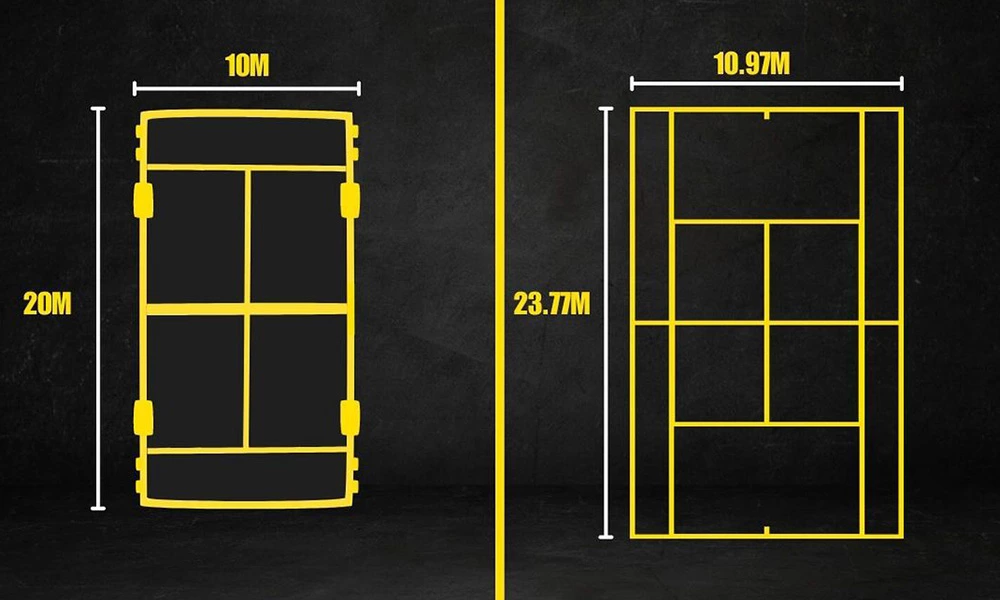
Diferentes tamaños de raqueta
El tamaño de la raqueta es otra diferencia importante: las raquetas de pádel son más cortas, de 45 cm de largo y 26 cm de ancho, y no tienen cuerdas, mientras que las raquetas de tenis son más grandes, de 69 cm de largo y 47 cm de ancho, y tienen cuerdas.
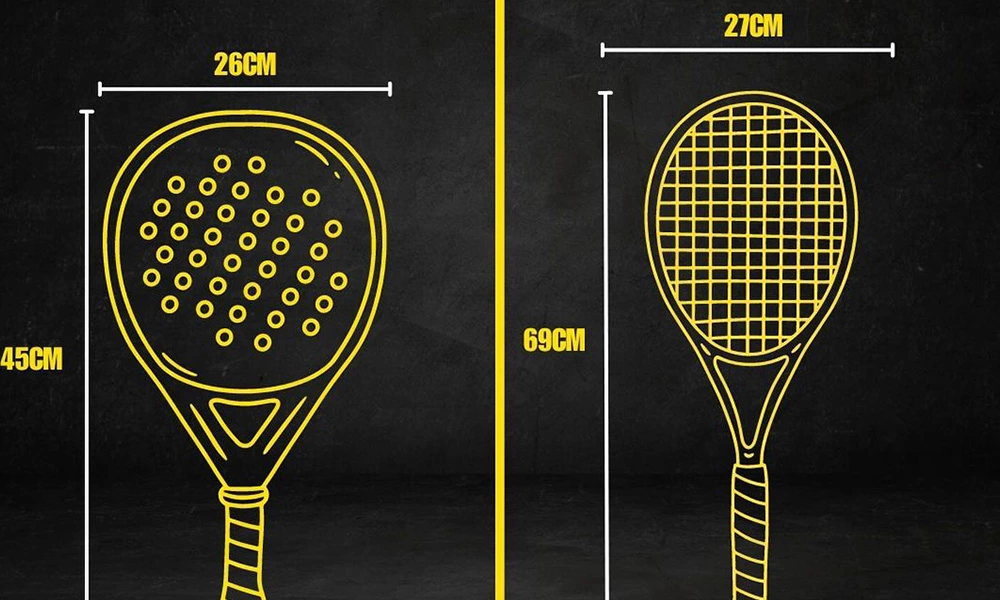
Diferentes tamaños de pelotas
El tamaño de las pelotas también varía: las pelotas de pádel tienen un diámetro que va desde los 6,35 a los 6,77 cm, un poco más pequeñas que las de tenis (6,54 a 6,86 cm).
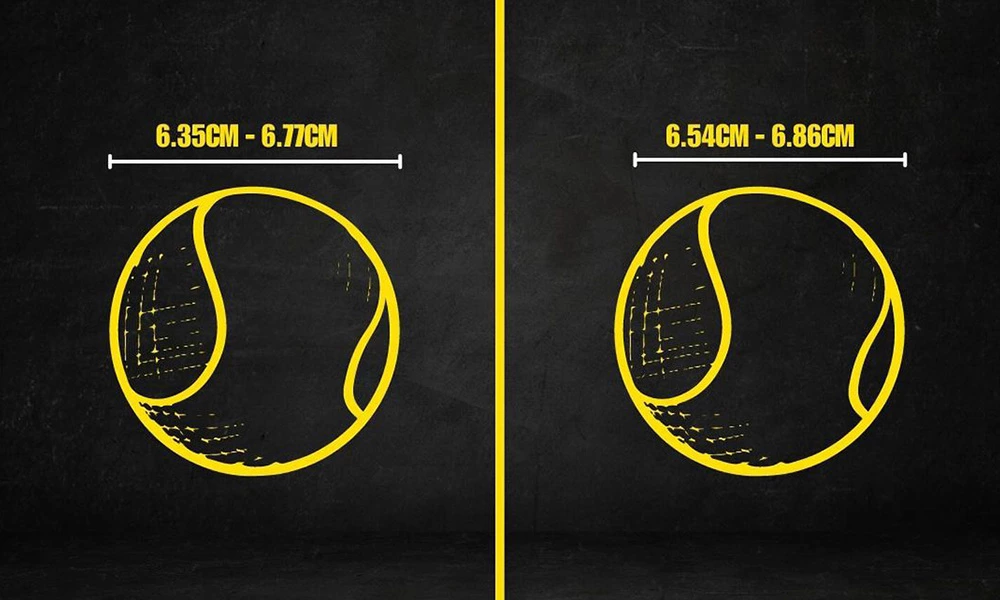
Diferentes tamaños de red de cancha
La altura de la red en una pista de pádel es de 88 cm, ligeramente inferior a los 91,3 cm de altura de una pista de tenis.
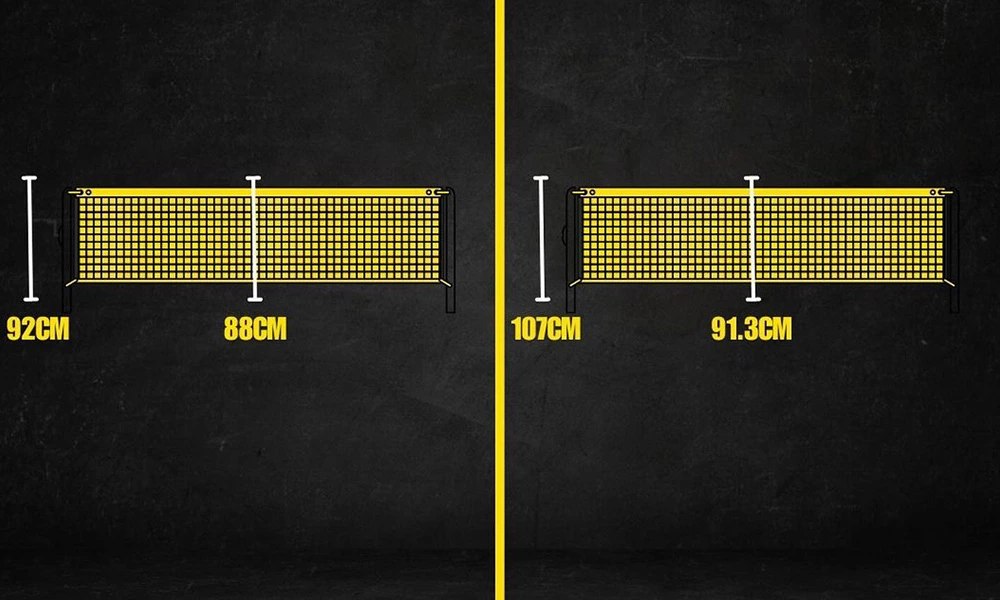
En general, el pádel se adapta a pistas más pequeñas y a un estilo de juego más compacto, mientras que las pistas de tenis y sus equipamientos son más grandes y el ritmo es relativamente rápido.
¿Cuáles son las diferencias en las reglas de juego entre el pádel y el tenis?
Aunque tanto el pádel como el tenis son deportes de raqueta, existen diferencias significativas en la forma de jugar, en sus reglas y en el diseño de las pistas.
Tamaño y diseño de la pista
Las pistas de pádel son significativamente más pequeñas que las de tenis, solo la mitad del tamaño de una pista de tenis. Las pistas de pádel están rodeadas de paredes de vidrio y malla metálica, que son parte del juego y permiten que la pelota siga siendo efectiva después de golpear las paredes, mientras que las pistas de tenis son abiertas y no tienen tales paredes.
Reglas de servicio
En pádel, el servicio es un servicio por debajo de la mano, donde la pelota debe golpearse por debajo de la cintura, y la pelota toca el suelo antes de ser servida a la zona de servicio del oponente. En tenis, el servicio suele ser un servicio por encima de la mano, que permite a los jugadores golpear la pelota con fuerza, creando mayores cambios de velocidad y ángulo.
Golpes y estrategia
La velocidad de golpeo del pádel es más lenta que la del tenis, y el juego se centra más en la velocidad de reacción de los jugadores y la coordinación táctica, especialmente utilizando el rebote de las paredes de la cancha para golpear ángulos complicados. En tenis, los jugadores suelen confiar en la fuerza y la velocidad para obtener una ventaja, y los golpes de derecha y de revés potentes son una parte importante del juego.
Sistema de puntuación
Ambos deportes utilizan el mismo sistema de puntuación (0, 15, 30, 40), pero el pádel es más lento, la pelota es más fácil de mantener en las rondas y las rondas largas ocurren con frecuencia. En tenis, debido a la cancha abierta y la velocidad rápida de la pelota, las rondas suelen ser más cortas y dependen más de la precisión y la fuerza.
Los partidos de tenis se juegan utilizando una estructura de sets y juegos, y cada set suele constar de 6 juegos, que se juegan normalmente en un formato al mejor de 3 o 5. La puntuación se realiza por 15, 30, 40 y luego por el juego ganador. Se utiliza un desempate para decidir sets ajustados.
La puntuación en pádel es similar a la del tenis, también se utiliza una estructura de sets y juegos, que se juega normalmente en un formato al mejor de 3. En algunos torneos, también se utiliza un único set de 9 juegos.
Principalmente dobles
Los partidos de pádel son casi siempre de dobles, mientras que en el tenis hay individuales y dobles. En el pádel, la cooperación tácita entre los jugadores es crucial, mientras que en el tenis los individuales se centran más en la fuerza y la estrategia individuales.
En general, el pádel es un deporte más lento y táctico que enfatiza el trabajo en equipo y el uso inteligente de las paredes; mientras que el tenis se centra más en las habilidades individuales, la fuerza y las reacciones rápidas.
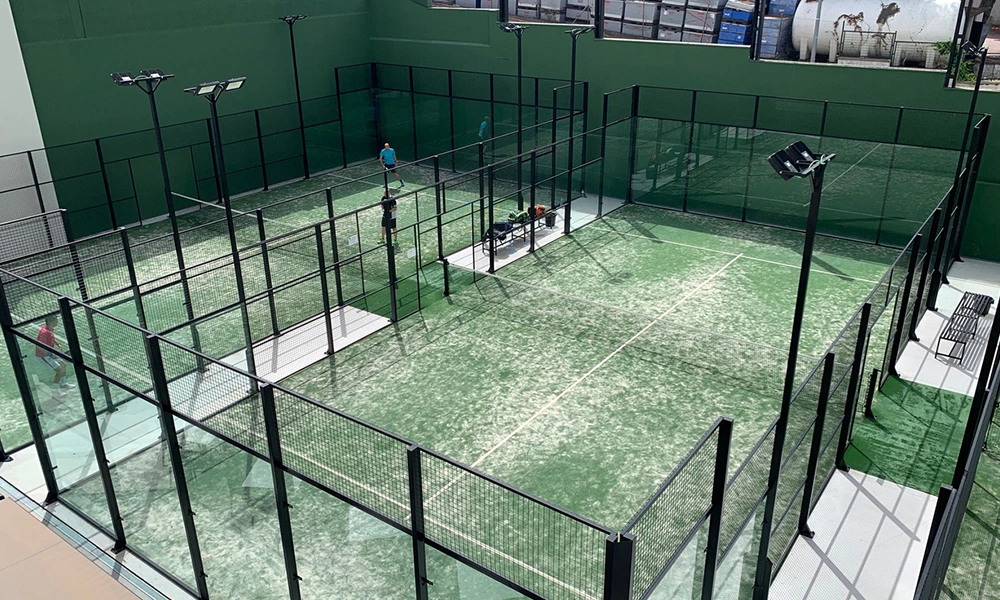
¿Cuáles son las diferencias entre las exigencias físicas del pádel y el tenis?
El tenis requiere que los jugadores tengan una gran resistencia y una capacidad de sprint de alta intensidad, con un amplio rango de movimiento y un énfasis en el rendimiento individual. Los jugadores necesitan cambiar de dirección con frecuencia y moverse largas distancias, por lo que el tenis presta más atención a la aptitud física personal y la resistencia al estrés.
Comparativamente hablando, el pádel tiene una cancha más pequeña y se centra más en las reacciones rápidas y los movimientos flexibles de corta distancia. Aunque el área de cobertura es más pequeña, los jugadores necesitan mantener un estado competitivo continuo, enfatizando la agilidad y la coordinación mano-ojo. Esto hace que el pádel sea adecuado para participantes de todos los niveles de condición física, y el ambiente social es más amigable e inclusivo.
Opciones deportivas para diferentes jugadores: pádel vs. tenis
Tanto el pádel como el tenis tradicional ofrecen experiencias únicas a los aficionados a los deportes de raqueta. El atractivo del pádel reside en su facilidad de inicio, su ritmo más rápido y la incorporación de cambios tácticos mediante rebotes en la pared, lo que resulta especialmente adecuado para jugadores que disfrutan de la interacción social y el trabajo en equipo. En cambio, el tenis se centra en la profundidad técnica y los desafíos físicos, siendo una opción ideal para quienes buscan potencia, control y competitividad.
La clave para elegir un deporte es lo que buscas obtener. Si quieres iniciarte rápidamente, empezar con facilidad y disfrutar de la interacción con amigos, el pádel es, sin duda, la mejor opción. Si buscas sumergirte en el ambiente competitivo de la confrontación técnica y el desarrollo personal, el tenis tradicional cumplirá mejor tus expectativas. Elijas el que elijas, la pasión y la diversión acompañarán cada golpe.
